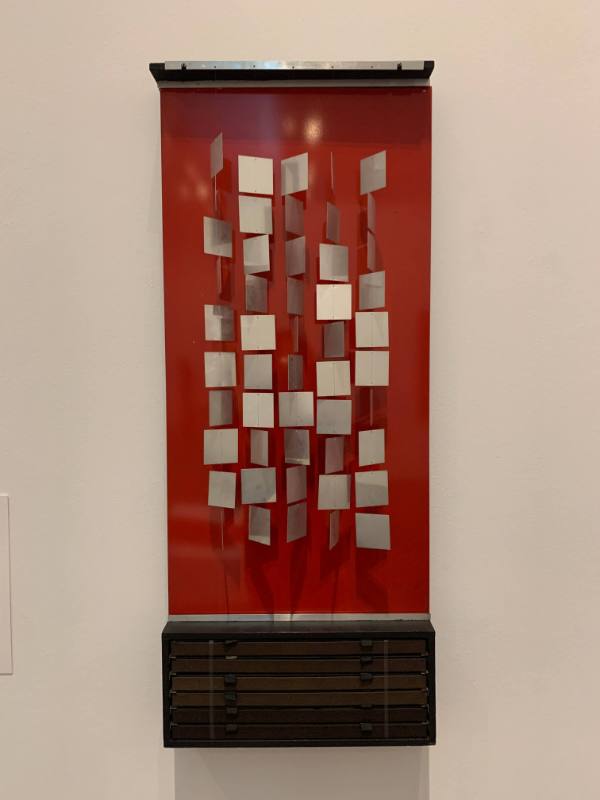Continuel Mobile [Continual Mobile]
Primary
Julio Le Parc
(Mendoza, Argentina, 1928–Cachan, France, present)
NationalityArgentinean, South America
Date1966
MediumAluminum and color acetate with cloth, cardboard, and fishing wire on wood
DimensionsOverall: 38 3/4 × 15 3/4 × 3 1/4 in. (98.4 × 40 × 8.3 cm)
Credit LineBlanton Museum of Art, The University of Texas at Austin, Gift of Judy S. and Charles W. Tate, 2019.106.a-?
Rights Statement
Collection AreaLatin American Art
Object number2019.106.a-?
On View
On viewLocations
- exhibition BMA, Gallery, C7 - Susman Galleries
Collection Highlight
Julio Le Parc was one of the leaders of the Kinetic art movement in Latin America and Europe. During the early 1960s he was a member of the Paris-based Group de recherche d’art visuel [Visual Art Research Group], which favored modifiable and mobile artworks that engaged the public in dynamic ways. In 1966, Le Parc participated in the Venice Biennale and won the Grand Prize in Painting, an important international recognition of the abstract and experimental art Latin Americans produced at home and abroad. Created at the peak of the Kinetic art movement, this piece displays Le Parc’s strategies to destabilize the traditional notion of art as unique and unchanging. This boxlike display, closer to an impersonal industrial object than a handicraft, shows a row of hanging squares whose reflective surfaces continually change the appearance of the work. Le Parc enhanced the multiplicity of the piece by designing different color backgrounds and sets of hanging squares, which conservators can change to modify the work’s visual appearance. In this iteration, silver squares shimmer against a red background.
Exhibitions
Julio Le Parc
circa 1980





![Obra articulada y móvil en bronce [Articulated and Mobile Work in Bronze]](/internal/media/dispatcher/3517/thumbnail)






![Sueño de las alturas [Dream of the Heights]](/internal/media/dispatcher/19020/thumbnail)